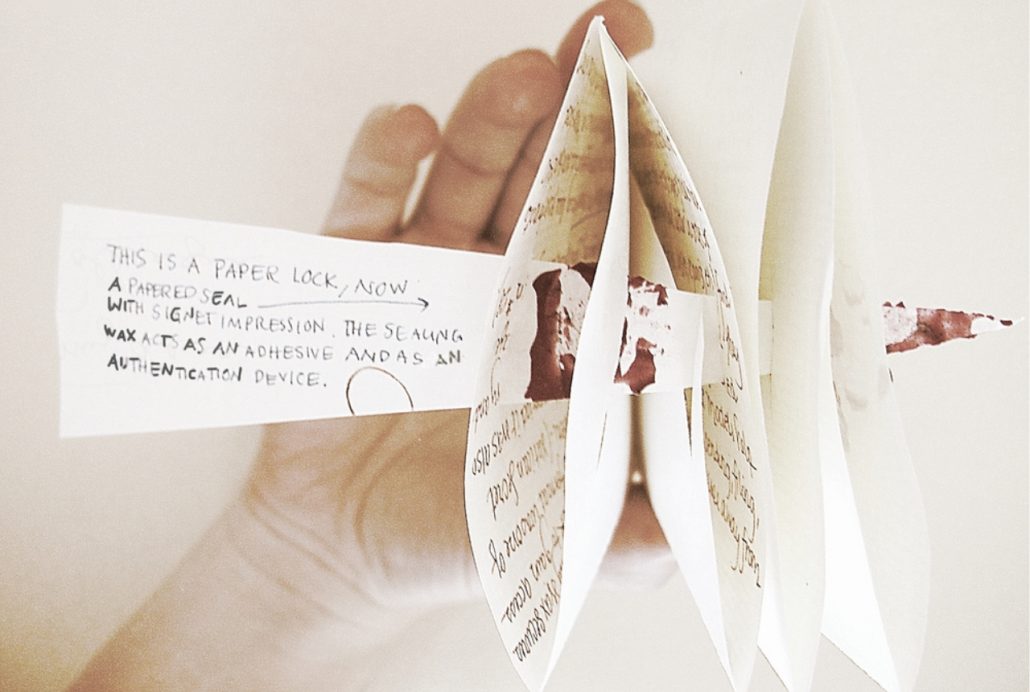Letterlocking
Ars Technica recently published an interesting article on how paper messages or letters were securely sent before the advent of electronic means of message transmission. This technique is referred to as “letterlocking” and involves methods of folding, cutting, tying with thread, and securing/embossing with wax to create a secure paper message.

Many types of letterlocking merely serve to create an envelope for the message and provide no additional security. Other, more elaborate types, involve intricate folding, cutting, application of wax seals, and other measures to provide a tamper-proof method of sending a message to it’s final recipient. Some methods even include “booby traps” for the unsuspecting person who might attempt to open the letter without authorization.
One might imagine this technique was used to send communications of an especially sensitive nature between Revolutionary War spies and military commanders (both on the Patriot and Loyalist sides of the conflict). I haven’t been able to find any specific examples of this, but they must surely exist. If anyone knows of any, please let me know at gro.s1751314448redir1751314448serev1751314448er@re1751314448tsamb1751314448ew1751314448.
Jana Dambrogio has been instrumental in the academic study of this historic method for keeping correspondence from the eyes of persons other than the intended recipient and bringing the practice to greater public knowledge. Ms. Dambrogio is the Thomas F. Peterson conservator at the MIT Libraries.
Below is a demonstration of how one of the more elaborate and secure letterlocking techniques used in a letter sent by Constantijn Huygens to Amalia von Solms in 1635:

You must be logged in to post a comment.